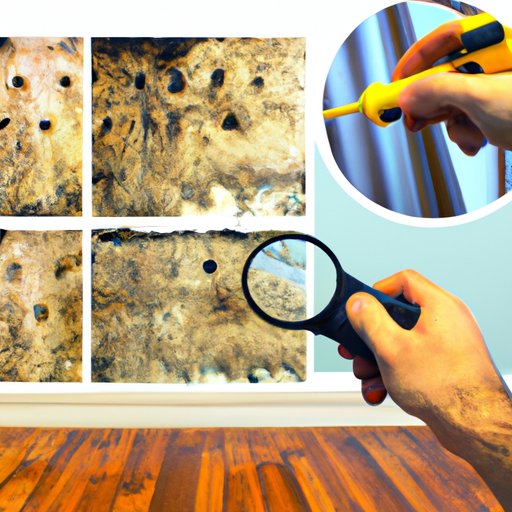Introduction
Mold can be a serious problem in many homes and buildings. Not only is it unsightly, but it can cause health problems if left untreated. Because of this, it’s important to understand how much does mold removal cost and what factors affect the price. This article provides a research-based guide to help you make an informed decision about how to proceed with mold removal.
Research-Based Guide to the Cost of Mold Removal
The cost of mold removal can vary depending on several different factors. Generally, the average cost for professional mold removal ranges from $500 to over $10,000, with most jobs costing around $2,000 to $3,000. DIY mold removal can be significantly cheaper, but it’s important to understand the risks associated with taking on such a project.
What Factors Impact Mold Removal Costs?
When considering the cost of mold removal, there are several factors that need to be taken into consideration. These include:
- Size and complexity of the job: The larger and more complex the mold removal project, the higher the cost will be. For example, a small area of mold growth may cost around $1,000 to remove, while a large, multi-room job could easily cost upwards of $10,000.
- Location of the property: The location of the property can also have an impact on the cost of mold removal. In some areas, the cost of labor may be higher than in others, which can lead to an increase in overall costs.
- Type of mold: Different types of mold require different methods of removal, which can affect the cost. Toxic black mold, for example, may require specialized equipment and safety protocols, which can add to the cost.
- Accessibility of the mold: If the mold is located in an area that is difficult to access, such as behind walls or under floorboards, the cost of removal may be higher due to the increased labor required.
- Materials used for removal: The type of materials used for removal can also affect the cost. Some materials, such as bleach, may be cheaper, while others, such as antimicrobial sprays, may be more expensive.

Understanding the Pros and Cons of DIY vs Professional Mold Removal
When it comes to mold removal, there are pros and cons to both DIY and professional services. DIY mold removal can be significantly cheaper, with some projects costing as little as $100. However, it’s important to understand the risks associated with taking on such a project. Without proper safety precautions, DIY mold removal can put you at risk for exposure to hazardous mold spores. Additionally, without the proper tools and experience, you may not be able to effectively remove all of the mold, leaving you vulnerable to future outbreaks.
On the other hand, professional mold removal services can be more expensive, but they provide peace of mind knowing that the job will be done correctly. Professional mold removal companies typically use specialized equipment and safety protocols to ensure that the job is done safely and effectively. Furthermore, professional services may offer additional benefits such as warranties or follow-up inspections to ensure that the mold has been completely removed.
How to Get the Best Price on Mold Removal Services
If you decide to hire a professional mold removal company, there are several steps you can take to ensure that you get the best price. First, it’s important to do your research and find reputable companies in your area. Once you’ve narrowed down your list, you should obtain multiple bids from different companies and compare them side by side. Finally, once you’ve chosen a company, don’t be afraid to negotiate with them to get the best possible price.

An Overview of Common Mold Removal Techniques and Costs
When it comes to mold removal, there are several different techniques that can be used. Some of the most common techniques include containment, cleaning, and disposal. Containment involves sealing off the affected area to prevent the spread of mold spores. Cleaning involves using specialized chemicals to remove the mold. Finally, disposal involves removing any contaminated materials from the property. The cost of each technique can vary depending on the size and complexity of the job.
For example, containment may cost between $500 and $2,500, depending on the size of the affected area. Cleaning may cost between $500 and $5,000, while disposal may cost between $500 and $10,000. It’s important to keep in mind that these estimates are just averages and the actual cost of the project may be higher or lower depending on the specifics of the job.
Conclusion
In conclusion, the cost of mold removal can vary greatly depending on several factors such as the size and complexity of the job, the location of the property, the type of mold, and the materials used for removal. DIY mold removal can be significantly cheaper, but it’s important to understand the risks associated with taking on such a project. On the other hand, professional mold removal services can be more expensive, but they provide peace of mind knowing that the job will be done correctly. When hiring a professional, it’s important to do your research, obtain multiple bids, and negotiate to get the best possible price. Finally, understanding the different techniques used for mold removal and their associated costs can help you make an informed decision about how to proceed with the project.
(Note: Is this article not meeting your expectations? Do you have knowledge or insights to share? Unlock new opportunities and expand your reach by joining our authors team. Click Registration to join us and share your expertise with our readers.)
